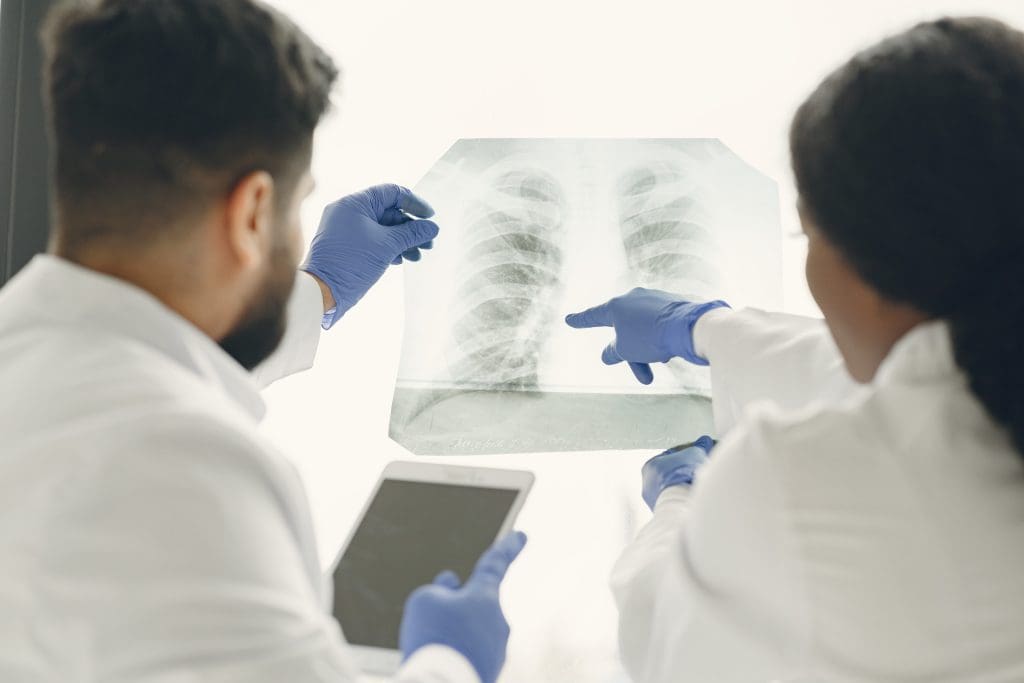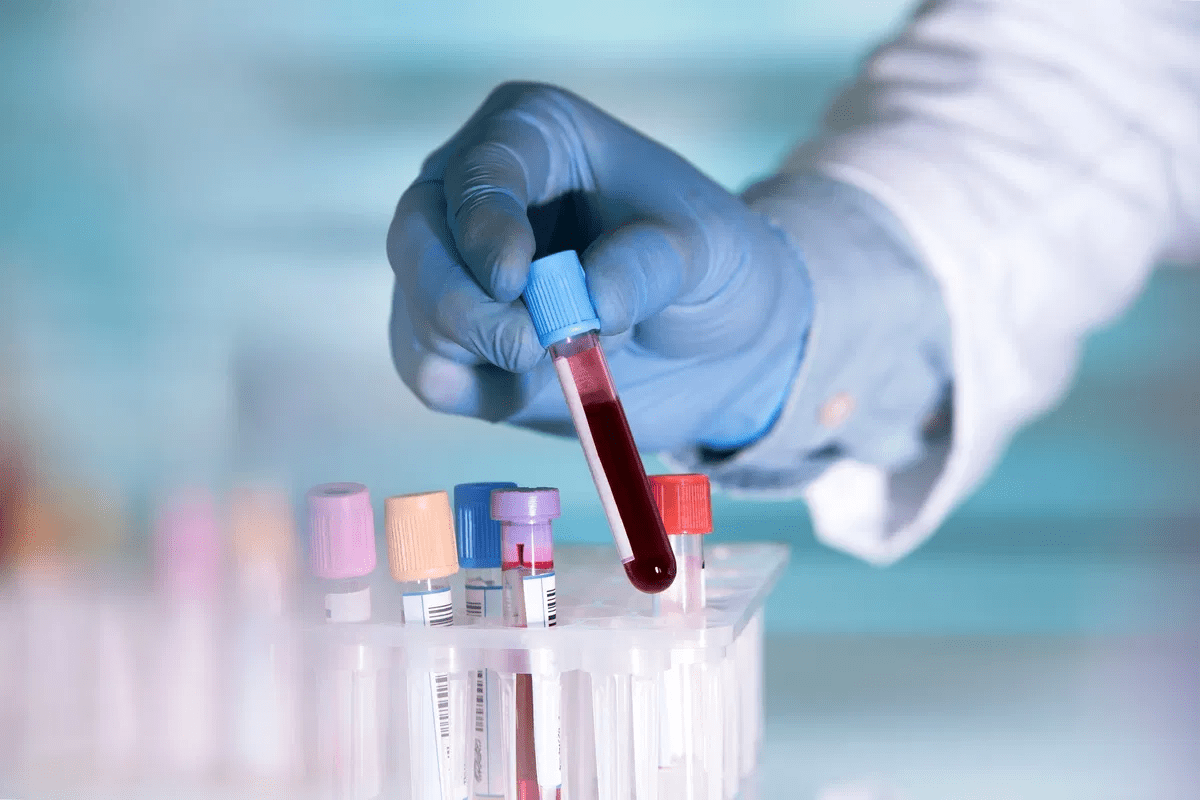Last Updated on November 27, 2025 by Bilal Hasdemir
What are the first signs of lung cancer? Lung cancer is a common cancer worldwide, affecting millions each year. A persistent cough is often an early sign. Yet, it’s often ignored or seen as something less serious.
Recognizing the early signs of lung cancer is crucial for timely treatment.. By recognizing symptoms early, people can get medical help quickly. This can greatly improve their chances of recovery.
Key Takeaways
- Understanding the early signs of lung cancer can lead to timely medical intervention.
- A persistent cough is a common early symptom of lung cancer.
- Early detection is key to improving treatment outcomes for lung cancer patients.
- Being aware of the risk factors can help in identifying lung cancer early.
- Regular check-ups and screenings are vital for those at high risk.
Understanding Lung Cancer: The Silent Threat

Lung cancer is a big health risk because it often doesn’t show symptoms early on. It’s key for people, and those at high risk, to know about lung cancer. This includes its types and how it starts.
Types of Lung Cancer
Lung cancer is mainly split into two types: Non-Small Cell Lung Cancer (NSCLC) and Small Cell Lung Cancer (SCLC). NSCLC makes up about 85% of cases and has subtypes like adenocarcinoma and squamous cell carcinoma. SCLC is more aggressive and linked to smoking.
Knowing the difference between these types is vital for treatment. NSCLC grows and spreads slower than SCLC. This means treatments can vary.
How Lung Cancer Develops
Lung cancer starts with genetic mutations that cause cells to grow out of control. These mutations can come from smoking or genetics. As cells multiply, they can spread to other parts of the body.
Lung cancer grows slowly over years. It begins with DNA damage in lung cells and then forms a tumor. Early detection is hard because of no symptoms. But knowing risk factors and watching for respiratory signs can help catch it early.
Recognizing the Worsening Cough: A Primary Warning Sign
A cough that doesn’t go away or gets worse could mean lung cancer. It’s key to know how to tell a cancer cough from a regular one. This helps spot warning signs early.
Characteristics of a Cancer-Related Cough
A cancer cough has unique signs that differ from a usual cough. These include:
- A cough that doesn’t fade or gets worse over time
- A dry cough or one that brings up mucus or blood
- A cough pattern or intensity that changes
Coughing is a common symptom of many respiratory issues. But, if it lasts or comes with other signs, see a doctor.
Differentiating from Common Coughs
Telling a cancer cough from a regular one is tricky. Yet, some clues can help. These are:
- Duration: A cough lasting more than a few weeks
- Severity: A cough getting worse or with other symptoms like chest pain or shortness of breath
- Characteristics: A cough with blood or with wheezing or hoarseness
Knowing these differences helps spot when a cough might be serious, not just a cold or flu.
Persistent Cough That Won’t Go Away
Coughing is a natural reflex, but a persistent cough may signal a serious problem. It lasts more than a few weeks and can be a sign of health issues, including lung cancer.
Duration is a critical factor in determining whether a cough is a cause for concern. A cough lasting more than 8 weeks is considered chronic and needs medical attention.
Duration as a Key Factor
The length of time a cough lasts is key in assessing its link to lung cancer. A cough lasting weeks or months is a warning sign, more so for those who smoke or are exposed to harmful substances.
| Cough Duration | Potential Causes | Level of Concern |
| Less than 2 weeks | Common cold, flu | Low |
| 2-8 weeks | Bronchitis, allergies | Moderate |
| More than 8 weeks | Lung cancer, COPD | High |
Changes in Cough Pattern Over Time
Changes in a cough’s pattern over time can signal lung cancer. This includes more frequent coughing, a change in sound or tone, or sputum production.
Monitoring these changes is vital for early detection. For example, a cough that persists or has blood in the sputum needs immediate medical check-up.
Blood in Sputum: When to Be Concerned
Blood in sputum, known medically as hemoptysis, is a concerning symptom. It needs a thorough medical investigation. It’s a critical indicator that could suggest lung cancer among other respiratory conditions.
Coughing up blood or rust-colored sputum is a significant respiratory symptom. It requires evaluation. The presence of blood can range from a few specks to a substantial amount. Understanding its cause is key.
What Causes Hemoptysis
Hemoptysis can result from various conditions, including lung cancer, bronchitis, pneumonia, and tuberculosis. In lung cancer, hemoptysis occurs due to the tumor’s erosion into the airways or blood vessels.
- Lung Cancer: Tumors can cause bleeding by invading airway walls or blood vessels.
- Infections: Conditions like pneumonia or bronchitis can cause inflammation and bleeding.
- Other Causes: Trauma, foreign bodies, and vascular abnormalities can also lead to hemoptysis.
Rust-Colored Sputum vs. Frank Blood
The nature of the blood in sputum can provide clues about the underlying cause. Rust-colored sputum is often associated with infections like pneumonia. Frank blood (bright red blood) can indicate a more severe condition such as lung cancer.
Key differences include:
- Rust-colored sputum: Typically seen in infections, indicating the presence of old blood.
- Frank blood: Bright red blood that may indicate active bleeding, often associated with more serious conditions.
Understanding these differences is key for determining the appropriate course of action. If you are experiencing hemoptysis, it’s essential to consult a healthcare professional. They can provide a proper diagnosis and treatment plan.
Chest Pain and Discomfort
Lung cancer often shows up as chest pain. This pain can feel different and can change. It’s not just a simple ache; it’s a complex symptom.
Characteristics of Lung Cancer Pain
The pain from lung cancer can feel like a dull ache or a sharp stab. It can also feel like pressure in the chest. This pain can be constant or it can come and go, often getting worse with certain activities. The way the pain feels can give clues about its cause.
Deep Breath Pain Patterns
One key thing about lung cancer pain is that it gets worse with deep breathing. This is because the tumor can irritate the lining of the lungs or the chest wall, making pain worse when you take a deep breath. Spotting this pattern is important for spotting lung cancer symptoms.
It’s key to understand chest pain and discomfort to catch lung cancer early. If you have persistent or severe chest pain, see a doctor. They can figure out the cause and what to do next.
Shortness of Breath and Respiratory Changes
Dyspnea, or shortness of breath, can be an early warning sign of lung cancer. It greatly affects a person’s quality of life. This symptom often shows as the disease gets worse, as tumors can block airways or make it hard for lungs to expand.
Gradual Onset of Dyspnea
The start of dyspnea in lung cancer patients is slow. At first, people might feel short of breath when doing physical activities like walking uphill or climbing stairs. As the disease gets worse, this symptom can get worse, even when resting.
Early detection is key because it can change treatment options and outcomes. Spotting the start of dyspnea can lead people to get medical help sooner, possibly leading to an earlier diagnosis.
Activity Limitations Due to Breathing Issues
As lung cancer gets worse, breathing problems can make it hard to do everyday tasks. Simple things like grocery shopping or doing household chores can become hard because of breathing trouble.
People with these symptoms should see a doctor. Early action can help manage symptoms and improve life quality.
Respiratory changes, like shortness of breath, are important signs that might mean lung cancer is present. Knowing these symptoms can help find lung cancer early and get better treatment.
Vocal Changes: Hoarseness and Voice Alterations
Hoarseness or changes in voice tone are signs of lung cancer. Lung cancer can change the voice in many ways. These changes can last a long time and have no clear cause.
A tumor in the lung can harm the nerves that control the voice box. This can cause hoarseness, a raspy voice, or other voice changes.
How Lung Cancer Affects the Voice
Lung cancer can harm the nerves that control the voice box. This can lead to persistent hoarseness or a change in voice pitch.
When Hoarseness Should Raise Concern
Hoarseness can be from a cold or too much voice use. But, if it lasts more than two weeks, it might be serious. If your voice keeps changing without reason, see a doctor.
A medical expert said,
“Hoarseness that lasts more than two weeks should be checked. It could be a sign of lung cancer.”
Unexplained Weight Loss and Loss of Appetite
Unexplained weight loss and loss of appetite are often overlooked symptoms that can be indicative of lung cancer. These changes can significantly impact a person’s overall health and quality of life.
As lung cancer progresses, it can alter the body’s metabolism, leading to unexplained weight loss. This occurs because cancer cells consume a lot of energy, changing how the body uses nutrients.
Metabolic Changes in Cancer
Cancer can cause significant metabolic changes, affecting how the body processes nutrients. The presence of cancer cells can increase the body’s energy expenditure, leading to weight loss even if the person’s appetite and eating habits remain unchanged.
These metabolic changes can result in the breakdown of muscle mass and fat, further contributing to weight loss. Understanding these changes is key for managing symptoms and improving quality of life for lung cancer patients.
Nutritional Implications
The nutritional implications of lung cancer are significant. Patients often experience a decrease in appetite, making it challenging to consume enough calories and nutrients.
| Nutritional Challenge | Impact on Patients |
| Loss of Appetite | Reduced calorie intake |
| Metabolic Changes | Increased energy expenditure |
| Nutritional Deficiencies | Weakened immune system |
Ensuring proper nutrition is vital for lung cancer patients to maintain their strength and support their treatment. Healthcare providers often recommend a diet rich in proteins and calories to counteract the metabolic changes caused by cancer.
Addressing unexplained weight loss and loss of appetite is key in managing lung cancer. By understanding the metabolic changes and nutritional implications, patients and healthcare providers can work together to improve outcomes.
Fatigue and Unexplained Tiredness
Fatigue is a common symptom of lung cancer. It feels like constant tiredness that doesn’t get better with rest. This tiredness can really affect a person’s life, both physically and mentally.
Differentiating Cancer-Related Fatigue
Cancer-related fatigue is different from regular tiredness. It doesn’t go away with rest, unlike normal fatigue. This symptom is caused by the cancer, treatments like chemotherapy, or both.
- Duration and Intensity: Cancer-related fatigue lasts longer and is more intense.
- Impact on Daily Life: It significantly interferes with daily activities and social interactions.
- Associated Symptoms: Often accompanied by other symptoms like pain, depression, or anxiety.
Energy Conservation Strategies
It’s important to manage fatigue to keep a good quality of life. Energy conservation strategies help people deal with their tiredness. These include pacing activities, taking breaks, and focusing on important tasks.
- Prioritize Activities: Focus on essential tasks and delegate or defer less important ones.
- Take Regular Breaks: Rest to avoid exhaustion.
- Maintain a Healthy Lifestyle: Engage in gentle exercises, eat a balanced diet, and stay hydrated.
Understanding and tackling fatigue helps people with lung cancer manage their symptoms. This can greatly improve their overall well-being.
Recurrent Lung Infections and Recurring Pneumonia
It’s important to know how lung infections and pneumonia are linked to lung cancer. Lung cancer can make it hard for the body to fight off infections. This leads to more cases of pneumonia and other lung infections.
When the body’s defenses are weak, infections can easily spread. Lung cancer can block airways, making it easier for infections to start.
Why Cancer Increases Infection Risk
Lung cancer makes infections more likely in several ways. Tumors can block airways, creating a perfect spot for infections. Also, fighting cancer weakens the immune system, making it harder to fight off infections.
Chemotherapy and other treatments can also weaken the immune system. This makes infections more likely.
Pattern Recognition in Recurring Infections
Spotting patterns in recurring infections is key to catching lung cancer early. If you keep getting pneumonia or bronchitis, it might mean there’s a bigger problem.
| Pattern | Description | Potential Indicator |
| Frequency | More than 2 episodes in a year | Increased risk of lung cancer |
| Duration | Infections lasting longer than usual | Possible lung cancer |
| Severity | Infections requiring hospitalization | Potential sign of lung cancer |
Knowing these patterns can help find lung cancer early. This can lead to better treatment chances.
Wheezing and Unusual Breathing Sounds
Unusual breathing sounds, like wheezing, can signal lung cancer. It’s key to know these signs. Wheezing is a high-pitched sound that happens when airways are blocked or narrow.
Airway Obstruction Signs
Lung cancer can cause airway obstruction. Tumors can grow in or press on airways, making breathing hard. This can lead to wheezing and other odd breathing sounds. Other signs include:
- Stridor, a harsh sound when breathing in, indicating upper airway obstruction
- Difficulty breathing or shortness of breath
- Coughing or choking sensations
When Wheezing Indicates Cancer vs. Asthma
Wheezing is often linked to asthma, but in lung cancer, it’s due to airway blockage by tumors. It’s important to tell the difference for the right treatment. Here’s a table that shows the main differences:
| Characteristics | Lung Cancer | Asthma |
| Wheezing Pattern | Often unilateral and persistent | Typically bilateral and variable |
| Associated Symptoms | Cough, weight loss, hemoptysis | Cough, wheeze, chest tightness |
| Triggers | Not typically triggered by allergens or cold air | Often triggered by allergens, exercise, or cold air |
Knowing these differences helps find the right medical help. If wheezing lasts or comes with other worrying signs, see a doctor.
Subtle Early Warning Signs Often Overlooked
Lung cancer can show itself in ways that are not obvious at first. It’s important to know the early warning signs. While a persistent cough is well-known, there are other signs that are often missed.
Shoulder and Arm Pain
Shoulder and arm pain can be a sign of lung cancer. This happens when a tumor presses on nerves in the chest. It’s key to look into persistent pain that doesn’t seem to come from injury or too much use.
Swelling in the Face and Neck
Swelling in the face and neck can also be a sign of lung cancer. This happens when a tumor blocks a major vein. This swelling, known as Superior Vena Cava Syndrome, can also cause dilation of neck veins and trouble breathing.
Eyelid Drooping and Other Neurological Signs
Some lung cancers can cause neurological symptoms. Eyelid drooping (ptosis), double vision, and pupil constriction are examples. These signs, known as Horner’s Syndrome, can show that a tumor is present and affecting nearby structures.
Lung Cancer Screening Eligibility and Process
Early detection of lung cancer can save lives. But, it’s key to know who’s eligible. Screening is mainly for those at high risk of getting the disease.
The guidelines for lung cancer screening aim to help those most likely to benefit. The main factor is a person’s smoking history.
High-Risk Population Guidelines
The United States Preventive Services Task Force (USPSTF) suggests screening for adults aged 50 to 80. They should have a 20 pack-year smoking history. This means smoking 20 packs a year for one year, or any combination that adds up to 20.
For instance, smoking 2 packs a day for 10 years equals 20 pack-years. Those at high risk should talk to their doctor about screening.
Screening Methods and Frequency
The main screening tool is Low-Dose Computed Tomography (LDCT). LDCT scans use low radiation to show lung details. This helps find tumors too small for a chest X-ray to see.
| Screening Method | Description | Frequency |
| LDCT | Low-Dose Computed Tomography | Annually |
| Chest X-Ray | Not recommended for screening | N/A |
Those at high risk should get screened every year. This continues until they’re 80 or have not smoked for 15 years.
Talking to your doctor about your risk and the pros and cons of screening is vital. This helps make a well-informed choice.
When to See a Doctor: Don’t Delay
Recognizing the right time to see a doctor is key to early lung cancer detection. If you’re dealing with ongoing symptoms, don’t wait to visit your doctor.
Don’t ignore symptoms like a persistent cough, chest pain, or trouble breathing. Knowing how long and how bad these symptoms are can help figure out when to see a doctor.
Symptom Duration Guidelines
If your cough or cold lasts over two weeks, it’s time to see a doctor. Also, if you cough up blood or rust-colored sputum, get medical help right away.
| Symptom | Duration | Action |
| Cough | More than 2 weeks | Consult a doctor |
| Coughing up blood | Immediate | Seek emergency care |
| Chest pain | Persistent or severe | Visit a doctor |
Preparing for Your Appointment
Before your doctor’s visit, write down your symptoms and when they started. Also, jot down any questions you have.
- Bring a friend or family member for support
- Be prepared to discuss your medical history
- Write down your symptoms and any concerns
Being ready for your appointment helps you get the most out of it. It also ensures your doctor has all the info they need for an accurate diagnosis.
Conclusion: Early Detection Saves Lives
Knowing the early signs of lung cancer is key to getting timely help. Common symptoms include a bad cough, chest pain, and coughing up blood. Other signs are feeling tired, losing weight, having trouble breathing, and hoarseness.
Being aware of these signs and knowing the risks, like smoking, can help a lot. This knowledge can greatly improve treatment chances.
The National Cancer Institute says survival rates for lung cancer depend on when it’s found. Early detection with low-dose CT scans can raise survival chances. This shows how vital lung cancer awareness and screening are, mainly for those at high risk.
By focusing on early detection and awareness, we can make treatments more effective. If you notice any symptoms or worry about your risk, see a doctor right away.
FAQ
What are the common symptoms of lung cancer?
Common symptoms include a persistent cough and worsening cough. You might also cough up blood. Chest pain and deep breath pain are signs too. Shortness of breath, hoarseness, and weight loss are other symptoms. Loss of appetite, fatigue, and recurring lung infections are also common.
How can I differentiate between a common cough and a cancer-related cough?
A cancer-related cough is persistent and gets worse over time. It may also come with blood in sputum, chest pain, or shortness of breath.
What causes hemoptysis, or coughing up blood?
Hemoptysis can be caused by lung cancer. It can also be caused by bronchitis, pneumonia, or tuberculosis.
What is the significance of rust-colored sputum?
Rust-colored sputum can be a sign of lung cancer. It may indicate the presence of blood or cancer cells in the sputum.
When should I be concerned about chest pain or discomfort?
You should be concerned if chest pain is persistent or worsens over time. Also, if it’s accompanied by shortness of breath, coughing up blood, or difficulty swallowing.
What are the early signs of shortness of breath related to lung cancer?
Early signs include gradual onset of dyspnea, or shortness of breath. It can limit daily activities and worsen over time.
Can lung cancer cause vocal changes, such as hoarseness?
Yes, lung cancer can cause vocal changes. This includes hoarseness if the tumor affects the nerves controlling the voice box.
What are the nutritional implications of lung cancer?
Lung cancer can cause metabolic changes. This leads to weight loss, loss of appetite, and fatigue. Proper nutrition is key for managing the disease.
How can I conserve energy if I’m experiencing fatigue related to lung cancer?
To conserve energy, pace activities and take regular breaks. Prioritize tasks to avoid exhaustion.
Am I at risk for lung cancer screening?
You may be eligible for lung cancer screening if you’re a high-risk individual. This includes current or former smokers, or those with a family history of lung cancer.
What are the guidelines for lung cancer screening?
Guidelines recommend annual screening with low-dose computed tomography (LDCT) for high-risk individuals.
When should I see a doctor if I’m experiencing symptoms that could indicate lung cancer?
See a doctor if you have persistent or worsening symptoms. This includes a cough, chest pain, or shortness of breath. Or if you have concerns about your risk factors.
How can I prepare for a doctor’s appointment to discuss possible lung cancer symptoms?
Prepare by making a list of your symptoms, medical history, and any questions or concerns. Be ready to discuss your risk factors and any changes you’ve noticed.






